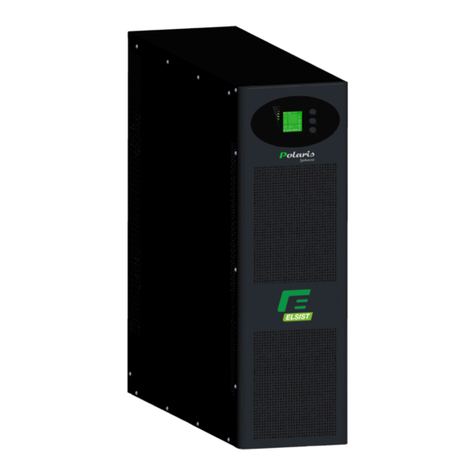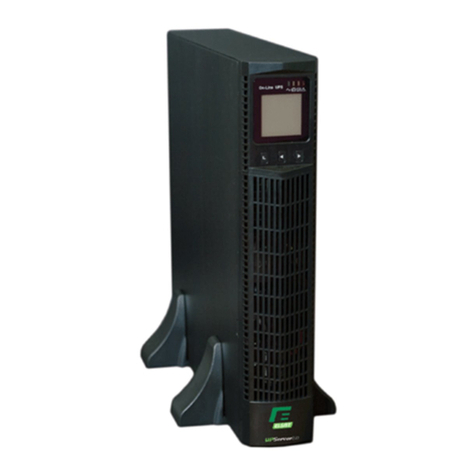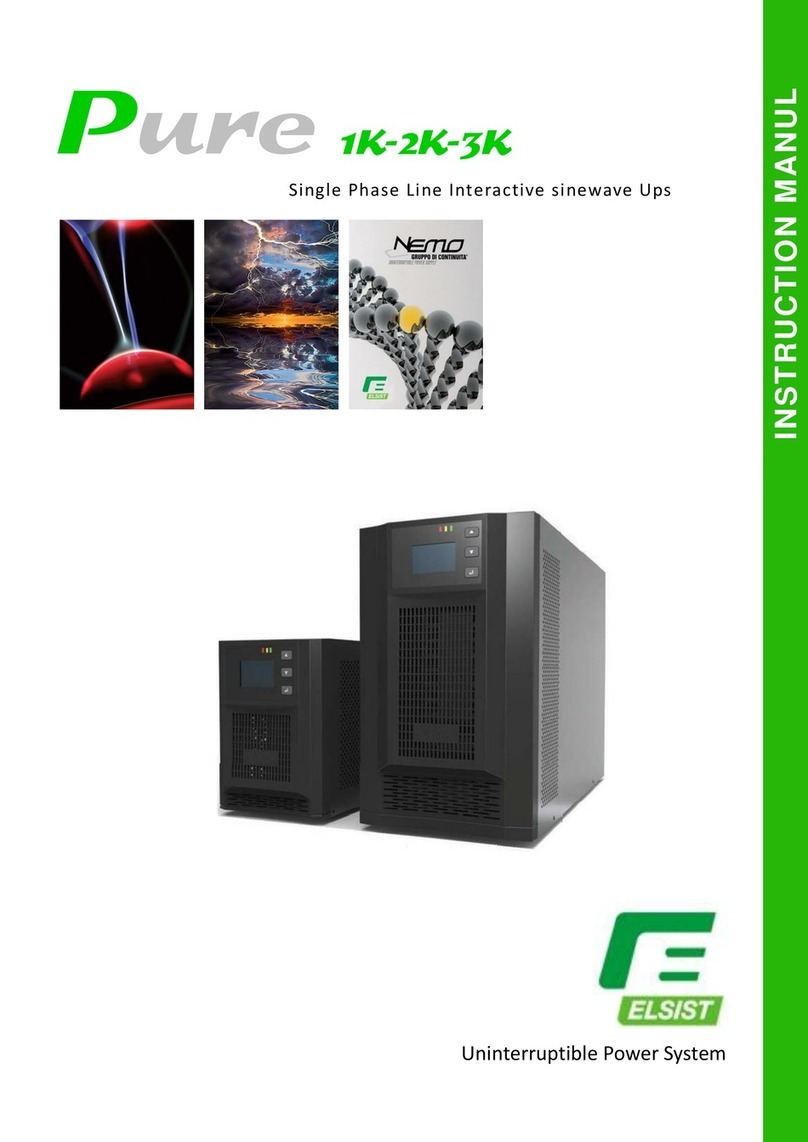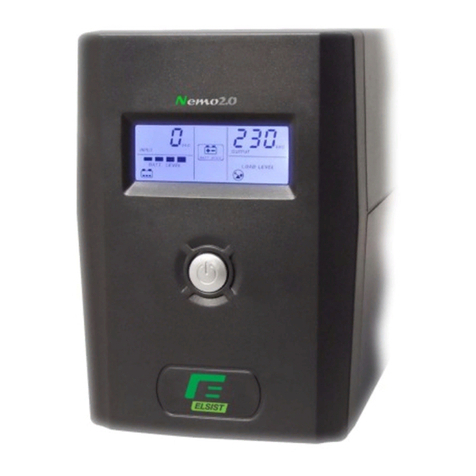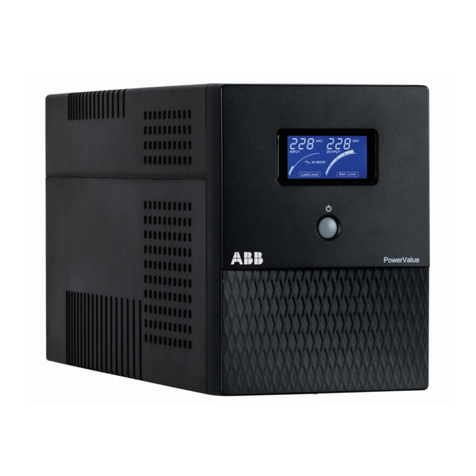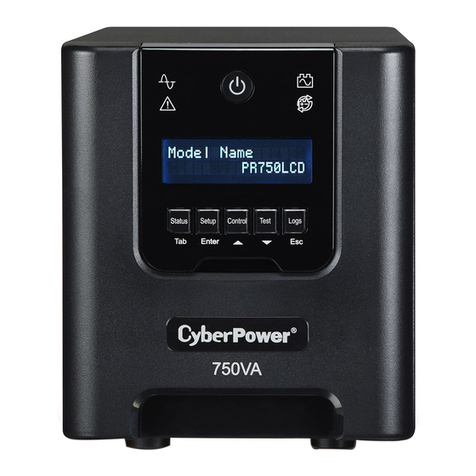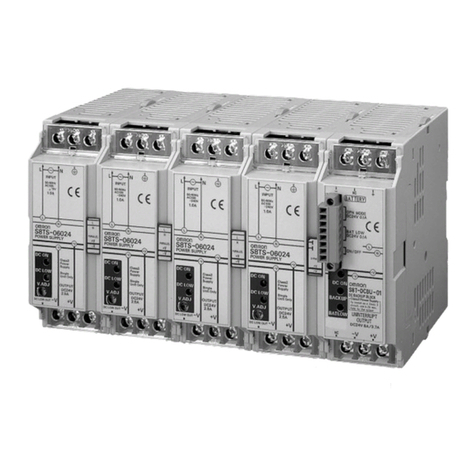Elsist POLARIS 60 User manual

Electrical System for Continuity
INSTRUCTION MANUAL

POLARIS 60●80●100●120●160●180●200●250●300●320●350
TRIPHASE-TRIPHASE
Rev. 01 –25 January 2023 2
Contents
1.Safety...............................................................................................................................................3
1.1 Safety notes..............................................................................................................................3
1.2 Symbols used in this guide.......................................................................................................3
2.Main Features.................................................................................................................................3
2.1 Summarization..........................................................................................................................3
2.2 Functions and Features............................................................................................................3
3.Installation ......................................................................................................................................4
3.1 Unpack checking......................................................................................................................4
3.2 Cabinet Outlook........................................................................................................................5
3.3 Display control panel................................................................................................................8
3.4 Installation notes.......................................................................................................................8
3.5 External Protective Devices......................................................................................................9
3.6
Power
Cables
............................................................................................................................9
3.7 Power cable connect...............................................................................................................10
3.8 Battery connection..................................................................................................................13
3.9 UPS parallel Installation ..........................................................................................................14
3.10 Computer access (CD MUSER4000)...................................................................................15
4.Operation ......................................................................................................................................16
4.1 Operation Modes.....................................................................................................................16
4.2 Turn on/off UPS......................................................................................................................18
4.3 The TFT Color Display............................................................................................................22
4.4 Parameters Display & Setting ................................................................................................25
4.5 Parallel System Commissioning.............................................................................................27
4.6 Operation messages and error messages.............................................................................27
4.7 Optional cards ........................................................................................................................28
Appendix 1 Technical Specifications ..............................................................................................29
Appendix 2 USB communication port definition............................................................................33
Appendix 3 RS232 communication port definition........................................................................33
Appendix 4 RS485 communication port definition........................................................................34
Appendix 5 Optocoupler contact communication port definition................................................34
Appendix 6 REPO communication port definition.........................................................................35
Appendix 7 LBS communication port definition............................................................................35
Publish statement
Thank you for purchasing this series UPS.
This series UPS is an intelligent, three phase in Three phase out, high frequency online UPS designed by our R&D team who is with years
of designing experiences on UPS. With excellent electrical performance, perfect intelligent monitoring and network functions, smart
appearance, complying with EMC and safety standards, The UPS meets the world’s advanced level.
Read this manual carefully before installation
This manual provides technical support to the operator of the equipment.
All rights reserved.
The information in this document is subject to change without notice.
Made in P.R.C

POLARIS 60●80●100●120●160●180●200●250●300●320●350
TRIPHASE-TRIPHASE
Rev. 01 –25 January 2023 3
1. SAFETY
Important safety instructions - Save these instructions
There exists dangerous voltage and high temperature inside the UPS. During the installation, operation
and maintenance, please abide the local safety instructions and relative laws, otherwise it will result in
personnel injury or equipment damage. Safety instructions in this manual act as a supplementary for the
local safety instructions. Our company will not assume the liability that caused by disobeying safety
instructions.
1.1 Safety notes
1. Even no connection with utility power, 220/230/240VAC voltage may still exist at UPS terminal !
2. For the sake of human being safety, please well earth the UPS before starting it.
3. Don’t open or damage battery, for the liquid spilled from the battery is strongly poisonous and do harmful
to body!
4. Please avoid short circuit between anode and cathode of battery, otherwise, it will cause spark or fire!
5. Don’t disassemble the UPS cover, or there may be an electric shock!
6. Check if there exists high voltage before touching the battery
7. Working environment and storage way will affect the lifetime and reliability of the UPS. Avoid the UPS
from working under following environment for long time
◆Area where the humidity and temperature is out of the specified range(temperature 0 to 40°C, relative
humidity 5%-95%)
◆Direct sunlight or location nearby heat
◆Vibration Area with possibility to get the UPS crashed.
◆Area with erosive gas, flammable gas, excessive dust, etc
8. Keep ventilations in good conditions otherwise the components inside the UPS will be over-heated which
may affect the life of the UPS.
1.2 Symbols used in this guide
WARNING! Risk of electric shock
CAUTION! Read this information to avoid equipment damage
2. MAIN FEATURES
2.1 Summarization
This series UPS is a kind of three-in-three-out high frequency online UPS.
The UPS can solve most of the power supply problems, such as blackout, over-voltage, under-voltage,
voltage sudden drop, oscillating of decreasing extent, high voltage pulse, voltage fluctuation, surge,
inrush current, harmonic distortion (THD), noise interference, frequency fluctuation, etc..
This UPS can be applied to different applications from computer device, automatic equipment,
communication system to industry equipment.
2.2 Functions and Features
◆3Phase In/3Phase Out UPS
It is 3Phase In/3Phase Out high-density UPS system, of which input current is kept in balance. No
unbalance problem might occur.
◆Digital Control
This series UPS is controlled by Digital Signal Processor (DSP); enhance, it increases reliability,
performance, self-protection, and self-diagnostics and so on.
◆Battery Configurable
from 32 blocks to 40 blocks, the battery voltage of this series UPS can be configured at 32 blocks, 34
blocks, 36 blocks, 38 blocks or 40 blocks according to your convenience.

POLARIS 60●80●100●120●160●180●200●250●300●320●350
TRIPHASE-TRIPHASE
Rev. 01 –25 January 2023 4
◆Charging Current is configurable
Via setting tool, the user may set the capacity of the batteries as well as reasonable charging current as
well as maximum charging current. Constant voltage mode, constant current mode or floating mode can
be switched automatically and smoothly.
◆Intelligent Charging Method
The series UPS adopts advanced three-stage charging method:
1st stage: high current constant current charging to guarantee to charge back to 90%;
2nd-stage: Constant Voltage in order to vitalize battery and make sure batteries are fully charged
3rd stage: floating mode.
With this 3-stage charging method, it extends the life of the batteries and guarantees fast charging.
◆LCD Display
With LCD plus LED displays, the user may easily get UPS status and its operational parameters, such
as input/output voltage, frequency & load%, battery % and ambient temperature, etc...
◆Intelligent Monitoring Function
Via optional SNMP Card, you may remotely control and monitor the UPS.
◆EPO Function
The series UPS may be completely shut off when the EPO is pressed. REPO function (Remote EPO) is
also available in this series UPS.
3. INSTALLATION
3.1 Unpack checking
1. Don’t lean the UPS when moving it out from the packaging.
2. Check the appearance to see if the UPS is damaged or not during the transportation, do not switch
on the UPS if any damage found. Please contact the dealer right away.
3. Cut and remove the plastic strap and remove the cardboard upwards.
4. Remove the plastic bag.
5. Check the accessories according to the list below and contact the dealer in case of missing parts.
ITEM
User Manual
●
Software MUSER4000 (CD)
●
USB Cable
●
EPO Connector
●
Parallel Cable
●present optional

POLARIS 60●80●100●120●160●180●200●250●300●320●350
TRIPHASE-TRIPHASE
Rev. 01 –25 January 2023 5
3.2 Cabinet Outlook
POLARIS 60-120KVA:
Frontal view Side view
Rear view

POLARIS 60●80●100●120●160●180●200●250●300●320●350
TRIPHASE-TRIPHASE
Rev. 01 –25 January 2023 6
(1) Pannello LCD
(2) Parallel port 1
(3) Parallel port 2
(4) Temperature sensor port (for NTC)
(5) RS485 port
(6) RS485 port
(7) USB port
(8) RS232 port
(9) LBS port
(10) BAT_SW
(11) Optional port (FEEDBACK o battery breaker
driver)
(12) MAINTAIN-AUXSWS port
(13) REPO port
(14) Intelligent Slot 1 (SNMP / Relay card)
(15) Cold start
(16) Intelligent Slot 2 (SNMP / Relay card)
(17) EPO
(18) Maintenance panel
(19)
(20) Maintenance switch & its cover
(21) Maintenance breaker
(22) Bypass breaker
(23) Input breaker
(24) Output breaker
(25) Terminal cover
POLARIS 80-100-160-180-200-250-300-320-350KVA:
Front View Side View

POLARIS 60●80●100●120●160●180●200●250●300●320●350
TRIPHASE-TRIPHASE
Rev. 01 –25 January 2023 7
1) TFT color display panel
2) Parallel port 1
3) Parallel port 2
4) REPO connector
5) RS485 port
6) LBS port
7) RS232 port
8) Power Switch
9) EPO switch
10) Bypass switch (reserve)
11) Input switch
12) GND
13) Intelligent Slot 1 (SNMP card/ Relay card)
14) Optocoupler contact
15) USB port
16) Intelligent Slot 2 (SNMP card/ Relay card)
17) Output switch
18) Maintenance switch & its cover
Rear View (terminal block without cover)

POLARIS 60●80●100●120●160●180●200●250●300●320●350
TRIPHASE-TRIPHASE
Rev. 01 –25 January 2023 8
3.3 Display control panel
1) LED (from top to bottom: alarm / bypass / battery / inverter”)
2) TFT color display
3) Scroll button
4) Off button (OFF)
5) On button (ON)
3.4 Installation notes
Note: Consider for the convenience of operation and maintenance, the space in front and back of the
cabinet should be left at least 100cm and 80cm respectively when installing the cabinet.
◆Please place the UPS in a clean, stable environment, avoid the vibration, dust, humidity, flammable gas
and liquid, corrosive. To avoid from high room temperature, a system of room extractor fans is
recommended to be installed. Optional air filters are available if the UPS operates in a dusty
environment.
◆The environment temperature around UPS should keep in a range of 0°C~40°C. If the environment
temperature exceeds 40°C, the rated load capacity should be reduced by 12% per 5°C. The max
temperature can't be higher than 50°C.
◆If the UPS is dismantled under low temperature, it might be in a condensing condition. The UPS can't be
installed unless the internal and external of the equipment is fully dry. Otherwise, there will be in danger
of electric shock.
◆Batteries should be mounted in an environment where the temperature is within the required specs.
Temperature is a major factor in determining battery life and capacity. In a normal installation, the battery
temperature is maintained between 15°C and 25°C. Keep batteries away from heat sources or main air
ventilation area, etc.
WARNING!
Typical battery performance data are quoted for an operating temperature between 20°C and
25°C. Operating it above this range will reduce the battery life while operation below this range
will reduce the battery capacity.
◆Should the equipment not be installed immediately it must be stored in a room so as to protect it against
excessive humidity and or heat sources.
CAUTION!
An unused battery must be recharged every 6months Temporarily connecting the UPS to a
suitable AC supply mains and activating it for the time required for recharging the batteries.
◆The highest altitude that UPS may work normally with full load is 1500 meters. The load capacity should
be reduced when this UPS is installed in place whose altitude is higher than 1500 meters, shown as the
following table:
(Load coefficient equals max load in high altitude place divided by nominal power of the UPS)
Altitude
(Mt)
1500
2000
2500
3000
3500
4000
4500
5000
Load
coefficient
100%
95%
90%
85%
80%
75%
70%
65%
◆The UPS cooling is depending on fan, so it should be kept in good air ventilation area. There are many
ventilation holes on the front and rear, so they should not be blocked by any obstacles.

POLARIS 60●80●100●120●160●180●200●250●300●320●350
TRIPHASE-TRIPHASE
Rev. 01 –25 January 2023 9
3.5 External Protective Devices
For safety reasons, it is necessary to install, external circuit breaker at the input A.C. supply and the
battery. This chapter provides guidelines for qualified installers that must have the knowledge of local
wiring practices for the equipment to be installed.
◆External Battery
The UPS and its associated batteries are protected against the effect of over-current through a DC
compatible thermo-magnetic circuit-breaker (or a set of fuses) located close to the battery.
◆UPS Output
Any external distribution board used for load distribution shall be fitted with protective devices that may
avoid the risk of UPS overloaded.
◆Over-current
Protection device shall be installed at the distribution panel of the incoming main supply. It may identify
the power cables current capacity as well as the overload capacity of the system.
CAUTION!
Select a thermo magnetic circuit-breaker with an IEC 60947-2 trip curve C (normal) for 125% of
the current.
3.6
Power
Cables
◆The cable design shall comply with the voltages and currents provided in this section, Kindly follow
local wiring practices and take into consideration the environmental conditions (temperature and
physical support media).
WARNING!
Upon starting. Please ensure that you are aware of the location and operation of the external
isolators which are connected to the UPS input/bypass supply of the mains distribution panel.
Check to see if these supplies are electrically isolated. And post and necessary warning signs to
prevent any inadvertent operation.
◆For future expansion purpose, it is economical to install power cable according to the full rating capacity
initially. The diameter of cable is shown below:
UPS
CABLE DIMENSION (mm2)
AC
Input
AC
Output
DC
Input
Ground
60-120KVA
4 x 35
4 x 35
3 x 50
35
80-100-160-180-200-250-300-320-350KVA
4 x 50
4 x 50
3 x 75
50
CAUTION!
Protective earth cable: Connect each cabinet to the main ground system. For Grounding
connection, follow the shortest route possible.
WARNING!
Failure to follow adequate earthing procedures may result in electromagnetic interference or in
hazards involving electric shock and fire

POLARIS 60●80●100●120●160●180●200●250●300●320●350
TRIPHASE-TRIPHASE
Rev. 01 –25 January 2023 10
UPS - TABLE BREAKERS
UPS MODEL
60-80-100-120-160-180-200-250-300-320-350KVA
INPUT breaker
3P 125A/400Vac
OUTPUT breaker
3P 125A/400Vac
BY-PASS breaker
3P 125A/400Vac
BY-PASS maintenance
breaker
3P 125A/400Vac
Internal Battery Fuse
4x 63A/500Vdc
4x 100A/500Vdc
3.7 Power cable connect
Once the equipment has been finally positioned and secured, connect the power cables as described in
the following procedure.
Verify the UPS is totally isolated from its external power source and also all power isolators of the UPS
are open. Check to see if they are electrically isolated, and post any necessary warning signs to prevent
their inadvertent operation. Remove the cover of terminals for wiring easily.
3.7.1 Common Input connection (single input) 60-120KVA
INPUT Main Input Line
OUTPUT
Vout-L1: Output Phase (L1)
Vin-L1: Primary Input Phase (L1)
Vout -L2: Output Phase (L2)
Vin-L2: Primary Input Phase (L2)
Vout -L3: Output Phase (L3)
Vin-L3: Primary Input Phase (L3)
Vout -N: Output Neutral
Vin-N: Input Neutral for primary and secondary
input
PE: Ground
BAT+: Positive terminal of batteries string
BATN: Neutral terminal of batteries string
BAT-: Negative terminal of batteries string

POLARIS 60●80●100●120●160●180●200●250●300●320●350
TRIPHASE-TRIPHASE
Rev. 01 –25 January 2023 11
3.7.2 Dual Input connection 60-120KVA
INPUT Main Input Line
OUTPUT
Bypass Secondary Input Line/Bypass
(optional)
Vout-L1: Output Phase (L1)
Vin-L1: Primary Input Phase (L1)
Vout -L2: Output Phase (L2)
Vin-L2: Primary Input Phase (L2)
Vout -L3: Output Phase (L3)
Vin-L3: Primary Input Phase (L3)
Vout -N: Output Neutral
Vin-N: Input Neutral for primary and secondary
input
PE: Ground
BPS-L1: Secondary Input Phase (L1)
BAT+: Positive terminal of batteries string
BPS-L2: Secondary Input Phase (L2)
BATN: Neutral terminal of batteries string
BPS-L3: Secondary Input Phase (L3)
BAT-: Negative terminal of batteries string
3.7.3 Common Input connection (single input) 80-100-160-180-200-250-300-320-350KVA

POLARIS 60●80●100●120●160●180●200●250●300●320●350
TRIPHASE-TRIPHASE
Rev. 01 –25 January 2023 12
INPUT-L1 = Primary Input Phase (L1)
INPUT-L2 = Primary Input Phase (L2)
INPUT-L3 = Primary Input Phase (L3)
INPUT-N = Input Neutral for primary and secondary
input
OUTPUT-L1 = Output Phase (L1)
OUTPUT-L2 = Output Phase (L2)
OUTPUT-L3 = Output Phase (L3)
OUTPUT-N = Output Neutral
BATTERY+ = Positive terminal of batteries string
BATTERY-N = Neutral terminal of batteries string
BATTERY- = Negative terminal of batteries string
GND = Ground - There are 3 grounding connectors under the terminal block
3.7.4 Dual Input connection 80-100-160-180-200-250-300-320-350KVA
INPUT-L1 = Primary Input Phase (L1)
INPUT-L2 = Primary Input Phase (L2)
INPUT-L3 = Primary Input Phase (L3)
INPUT-N = Input Neutral for primary and secondary
input
BYPASS-L1 = Secondary Input Phase (L1)
BYPASS-L2 = Secondary Input Phase (L2)
BYPASS-L3 = Secondary Input Phase (L3)
OUTPUT-L1 = Output Phase (L1)
OUTPUT-L2 = Output Phase (L2)
OUTPUT-L3 = Output Phase (L3)
OUTPUT-N = Output Neutral
BATTERY+ = Positive terminal of batteries string
BATTERY-N = Neutral terminal of batteries string
BATTERY- = Negative terminal of batteries string
GND = Ground - There are 3 grounding connectors under the terminal block
WARNING!
In the case of “Dual input” operation, make sure the copper wire between each input lines have
been removed. The AC input and the AC bypass supplies must be referenced to the same
neutral point.
Choose appropriate power cable. (Refer to the table above) and pay attention to the diameter of the
connection terminal of the cable that should be greater than or equal to that of the connection poles;

POLARIS 60●80●100●120●160●180●200●250●300●320●350
TRIPHASE-TRIPHASE
Rev. 01 –25 January 2023 13
WARNING!
If the load equipment is not ready to accept power on the arrival of the commissioning engineer
then ensure that the system output cables are safely isolated at their ends.
Connect the safety earth and any necessary bonding earth cables to the copper earth screw
located on the floor of the equipment below the power connections. All cabinets in the UPS
must be grounded properly.
CAUTION!
The earthing and neutral bonding arrangement must be in accordance with local and national
codes of practice.
3.8 Battery connection
60-120KVA
The UPS adopts positive and negative double battery framework, totally 30pcs (optional
32/34/36/38/40/42/44/46/48/50) in series. A neutral cable is retrieved from the joint between the cathode
of the 15th (16th/17th/18th/19th/20th/21st/22nd/23rd/24th/25th) and the anode of the 16th
(17th/18th/19th/20th/21st/22nd/23rd/24th/25th/26th) of the batteries.
Then the neutral cable, the battery Positive and the battery negative are connected with the UPS
respectively. The battery sets between the Battery anode and the neutral are called positive batteries
and that between neutral and cathode are called negative ones.
80-100-160-180-200-250-300-320-350KVA
The UPS adopts positive and negative double battery framework, totally 40pcs (optional 32/34/36/38) in
series. A neutral cable is retrieved from the joint between the cathode of the 20th (16th 17th/18th/19th) and
the anode of the 21st (17th/18th/19th/20th) of the batteries.
Then the neutral cable, the battery Positive and the battery negative are connected with the UPS
respectively. The battery sets between the Battery anode and the neutral are called positive batteries
and that between neutral and cathode are called negative ones.
ex.: connection for 60-120KVA
Note:
The BAT+ of the UPS connect poles is connected to the anode of the positive battery, the BAT-N is
connected to the cathode of the positive battery and the anode of the negative battery, the BAT- is
connected to the cathode of the negative battery.
CAUTION!
Ensure correct polarity battery string series connection. I.e. inter-tier and inter block
connections are from (+) to (-) terminals.
Don’t mix batteries with different capacity or different brands, or even mix up new and old
batteries.
WARNING!
Ensure correct polarity of string end connections to the Battery Circuit Breaker and from the
Battery Circuit Breaker to the UPS terminals i.e. (+) to (+) / (-) to (-) but disconnect one or more
battery cell links in each tier. Do not reconnect these links and do not close the battery circuit
breaker unless authorized by the commissioning engineer.

POLARIS 60●80●100●120●160●180●200●250●300●320●350
TRIPHASE-TRIPHASE
Rev. 01 –25 January 2023 14
3.9 UPS parallel Installation
The following sections introduce the installation procedures specified to the parallel system.
3.9.1 Cabinet installation
Connect all the UPS needed to be put into parallel system as below picture.
Make sure each UPS input breaker is in “off”position and there is no any output from each UPS
connected. Battery groups can be connected separately or in parallel, which means the system itself
provides both separate battery and common battery.
WARNING!
Make sure the N, A (L1), B (L2), C (L3) lines are correct, and grounding is well connected.
3.9.2 Parallel cable installation
Shielded and double insulated control cables available must be interconnected in a ring configuration
between UPS units as shown below. The ring configuration ensures high reliability of the control.
3.9.3 Requirement for the parallel system
A group of paralleled UPS behaves as one large UPS system but with the advantage of presenting
higher reliability. In order to assure that all UPS are equally utilized and comply with relevant wiring rules,
please follow the requirements below:
1) All UPS must be of the same rating and be connected to the same bypass source.
2) The outputs of all the UPS must be connected to a common output bus.
3) The length and specification of power cables including the bypass input cables and the UPS output
cables should be the same. This facilitates load sharing when operating in bypass mode.
3.9.4 On screen display
Parallel ID number (light blue)
System ID number (green)

POLARIS 60●80●100●120●160●180●200●250●300●320●350
TRIPHASE-TRIPHASE
Rev. 01 –25 January 2023 15
3.10 Computer access (CD MUSER 4000)
◆One end of a USB cable connect to the computer, the other end connect to the USB port on the UPS.
◆Open the software Muser4000, click “system”button.
◆A window of “Software Parameter Setting”comes out as below, COM choose according to the UPS,
baud rate choose 9600, protocol choose “HIP”, then save this setting.
◆On the main page of Muser4000, click the button of “Append”, then goes to a window of “Append
equipment”.
◆Put the UPS name into “Equipment Name”, and UPS’ID address into “Equipment address”.

POLARIS 60●80●100●120●160●180●200●250●300●320●350
TRIPHASE-TRIPHASE
Rev. 01 –25 January 2023 16
◆Click the button “Append”, then the connection between UPS & computer is accomplished.
CAUTION!
When the UPS works on inverter, if you want to use PC to set the output voltage and frequency,
you must shut down the inverter first.
4. OPERATION
4.1 Operation Modes
The UPS is a double-conversion on-line UPS that may operate in the following alternative modes:
◆Normal mode
The rectifier/charger derives power from the AC Mains and supplies DC power to the inverter while
floating and boosting charge the battery simultaneously. Then, the inverter converts the DC power to AC
and supplies to the load.
◆Battery mode (Stored Energy Mode)
If the AC mains input power fails, the inverter, which obtains power from the battery, supplies the critical
AC load. There is no power interruption to the critical load. The UPS will automatically return to Normal
Mode when AC recovers.

POLARIS 60●80●100●120●160●180●200●250●300●320●350
TRIPHASE-TRIPHASE
Rev. 01 –25 January 2023 17
Bypass mode
If the inverter is out of order, or if overload occurs, the static transfer switch will be activated to transfer
the load from the inverter supply to bypass supply without interruption to the critical load. In the event
that the inverter output is not synchronized with the bypass AC source, the static switch will perform a
transfer of the load from the inverter to the bypass with power interruption to the critical AC load. This is
to avoid paralleling of unsynchronized AC sources. This interruption is programmable but typically set to
be less than an electrical cycle e.g. less than 15ms (50Hz) or less than 13.33ms (60Hz).
◆ECO Mode
When the UPS is at AC Mode and the requirement to the load is not critical, the UPS can be set at
ECO mode in order to increase the efficiency of the power supplied. At ECO mode, the UPS works
at Line-interactive mode, so the UPS will transfer to bypass supply. When the AC is out of set
window, the UPS will transfer from bypass to Inverter and supplies power from the battery, and then
the LCD shows all related information on the screen.
◆Maintenance mode (Manual Bypass)
A manual bypass switch is available to ensure continuity of supply to the critical load when the UPS is
out of order or in repair and this manual bypass switch bears for equivalent rated load.
◆Parallel redundancy mode (system expansion)
To achieve a higher capacity and / or increase reliability, the outputs of up to four UPS can be
programmed to operate in parallel and the built-in parallel controller in each UPS ensures automatic load
sharing.

POLARIS 60●80●100●120●160●180●200●250●300●320●350
TRIPHASE-TRIPHASE
Rev. 01 –25 January 2023 18
4.2Turn on/off UPS
4.2.1 Start procedure with Main present
CAUTION!
Make sure grounding is properly done and the correct connection of the phases.
CAUTION!
Check to see if the load is safely connected with the output of the UPS. If the load is not ready to
receive power from the UPS, make sure that it is safely isolated from the UPS output terminals
◆Close INPUT switch (MAINS)
◆Close BYPASS switch and wait until Bypass led turn ON
If the Rectifier input is within voltage range, the rectifier will start up in 30 seconds then the inverter will
start up after then.
If the rectifier fails at startup, the bypass LED will light up. When the inverter starts up, the UPS will
transfer from bypass mode to inverter mode, and then the bypass LED extinguishes and the inverter
LED lights up.
◆Close OUPUT switch
All the status of the UPS will be shown on the LCD display.
4.2.2 Test procedure
CAUTION!
The UPS is operating normally. It may take 60 seconds to boost up the system and perform
self-test completely.
◆Switch OFF the MAINS to simulate utility failure, the rectifier will turn off and the battery should feed the
inverter without interruption. At this time, the LED of battery should be turned on.
◆Switch ON the MAINS to simulate utility recovery, the rectifier will restart automatically after 20 seconds
and the inverter will supply to the load. It is suggested to use dummy loads for testing. The UPS can be
loaded up to its maximum capacity during load test.
4.2.3 Maintenance Bypass
To supply the load via Mains, you may simply active the maintenance breaker.
CAUTION!
The load is not protected by the UPS when the manual bypass system is active.
Switch to manual bypass:
◆Open the cover of maintenance switch, the UPS turns to bypass mode automatically. The Bypass
LED turn on.
◆Turn on MAINTENANCE breaker;
◆Switch OFF the INPUT MAINS breaker,
◆Switch OFF OUTPUT breaker;
◆Switch OFF BYPASS breaker;
At this time the bypass source will supply to the load through the MAINTENANCE breaker.

POLARIS 60●80●100●120●160●180●200●250●300●320●350
TRIPHASE-TRIPHASE
Rev. 01 –25 January 2023 19
Switch to normal operation (from manual bypass)
CAUTION!
Never attempt to switch the UPS back to normal operation until you have verified that there are
no internal UPS faults.
◆Switch ON the OUTPUT breaker.
◆Switch ON the MAINS breaker.
◆Switch OFF the MAINTENANCE breaker, then the output is supplied by the static bypass of the UPS.
◆Put on the maintenance switch cover.
The rectifier will operate normally after 30 seconds. If the inverter works normally, the system will be
transferred from bypass mode to normal mode. Green LED turn on.
4.2.4 Cold start procedure (start up from battery)
CAUTION!
Follow these procedures when the input AC Utility Failure, but battery is normal
◆Push COLD START button, wait about 30s until the Inverter and yellow battery led turn on.
◆Switch ON the OUTPUT breaker.

POLARIS 60●80●100●120●160●180●200●250●300●320●350
TRIPHASE-TRIPHASE
Rev. 01 –25 January 2023 20
4.2.5 Shutdown procedure
CAUTION!
This procedure should be followed to completely shutdown the UPS and the LOAD. After all
power switches isolators and circuit breakers are opened, there will be no output.
◆Push OFF button (4) on the front panel for a few sec. the green inverter LED turn off and the yellow
Bypass LED turn on.
◆Switch OFF the MAINS breaker.
◆Switch OFF the BYPASS breaker.
◆Switch OFF the OUTPUT breaker. Now the UPS will be completely OFF.
◆To completely isolate the UPS from AC Mains, all input switches of Utility shall be completely off, which
includes the ones for rectifier and bypass.
◆On the primary input distribution panel, which is often located far away from the UPS area, a label should
be posted to advise service personnel that the UPS circuit is under maintenance.
WARNING!
The internal capacitors are not completely discharged.
4.2.6 Parallel setting
◆Refer to chapter 3.9 –4.5.
(with CD MUSER 4000 optional)
◆Connect the UPS with computer. Power on the UPS.
◆Open Muser4000 software, after connecting with the UPS successfully, click “System”->“User Set”
◆Click “Set”at “User Set”window;
This manual suits for next models
10
Table of contents
Other Elsist UPS manuals
Popular UPS manuals by other brands
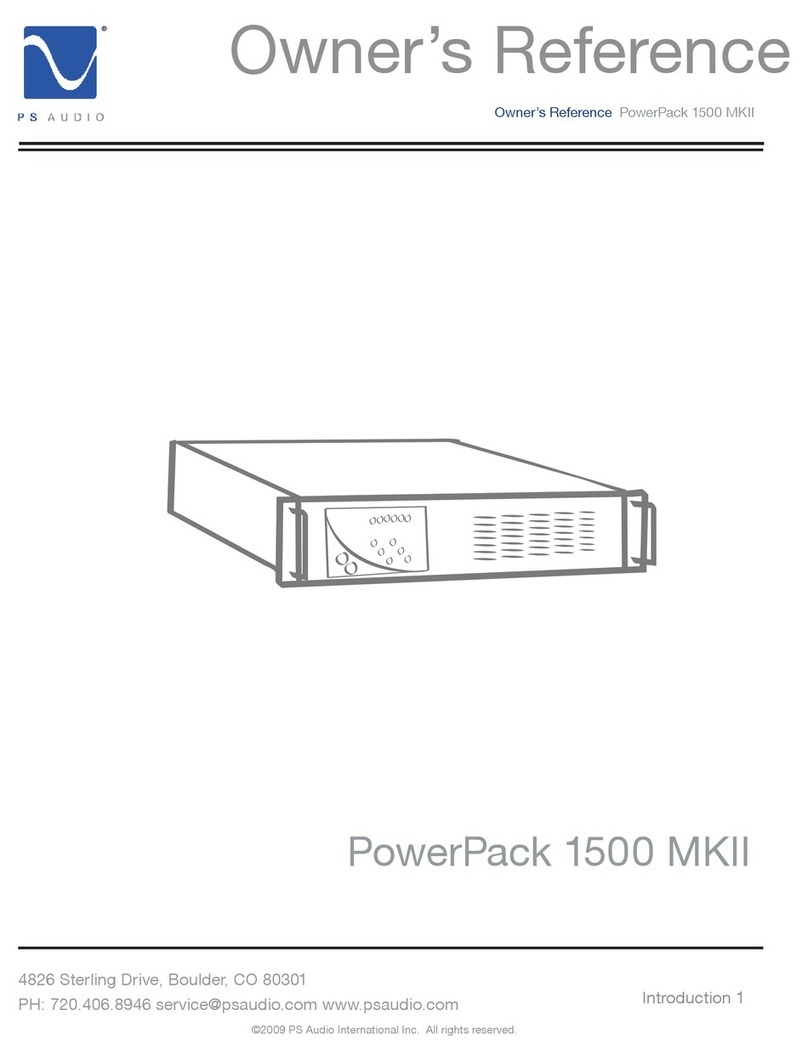
PS Audio
PS Audio POWERPACK 1500 MKII Owner reference guide
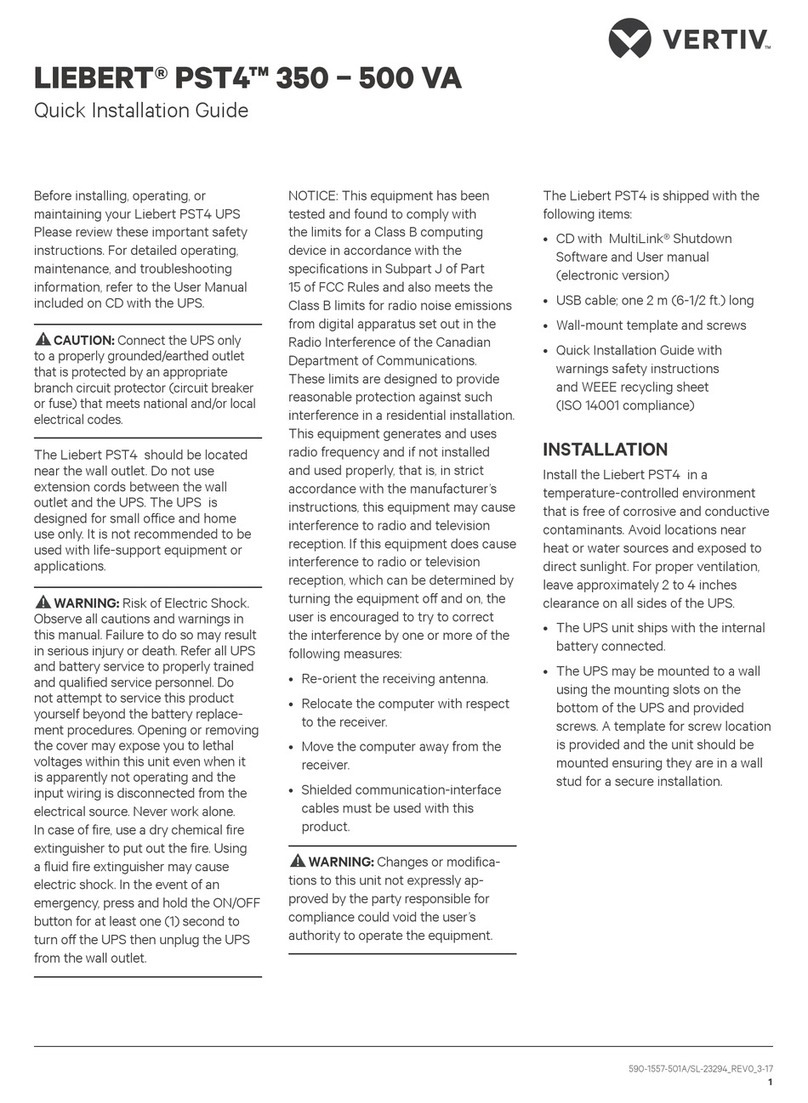
Vertiv
Vertiv LIEBERT PST4 Series Quick installation guide
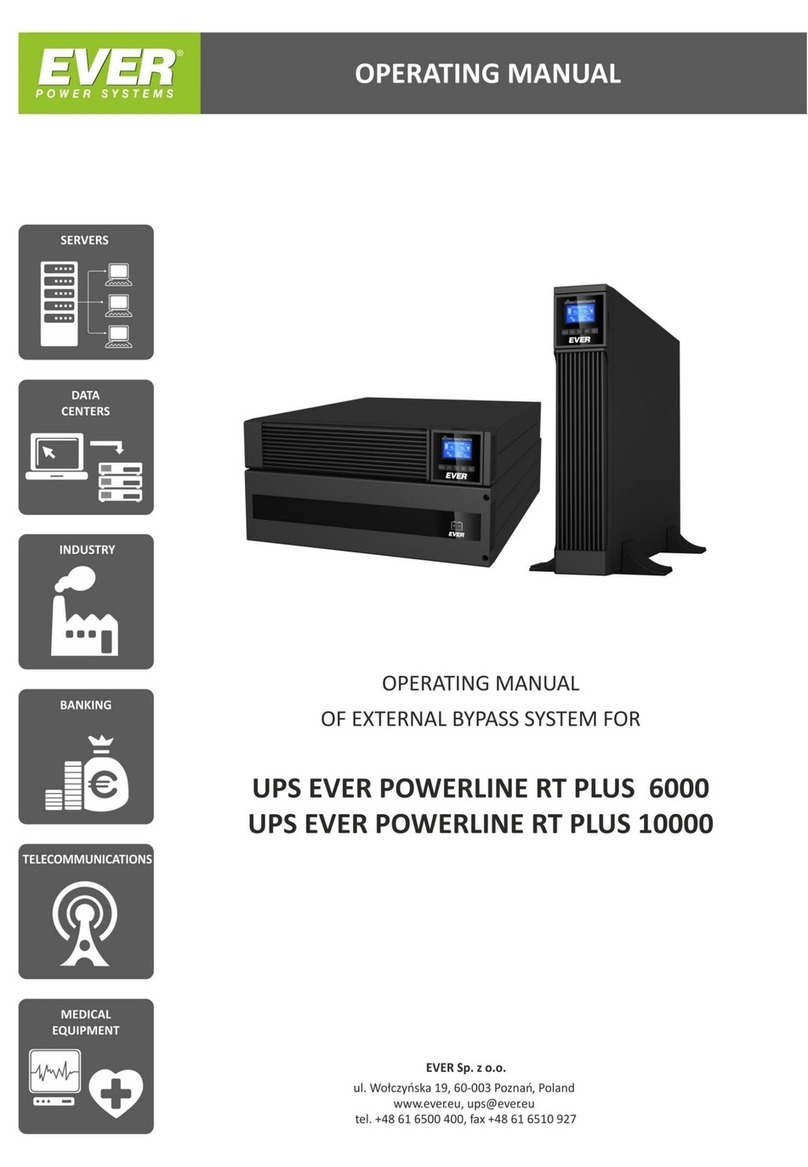
Ever Power Systems
Ever Power Systems POWERLINE RT PLUS 6000 operating manual
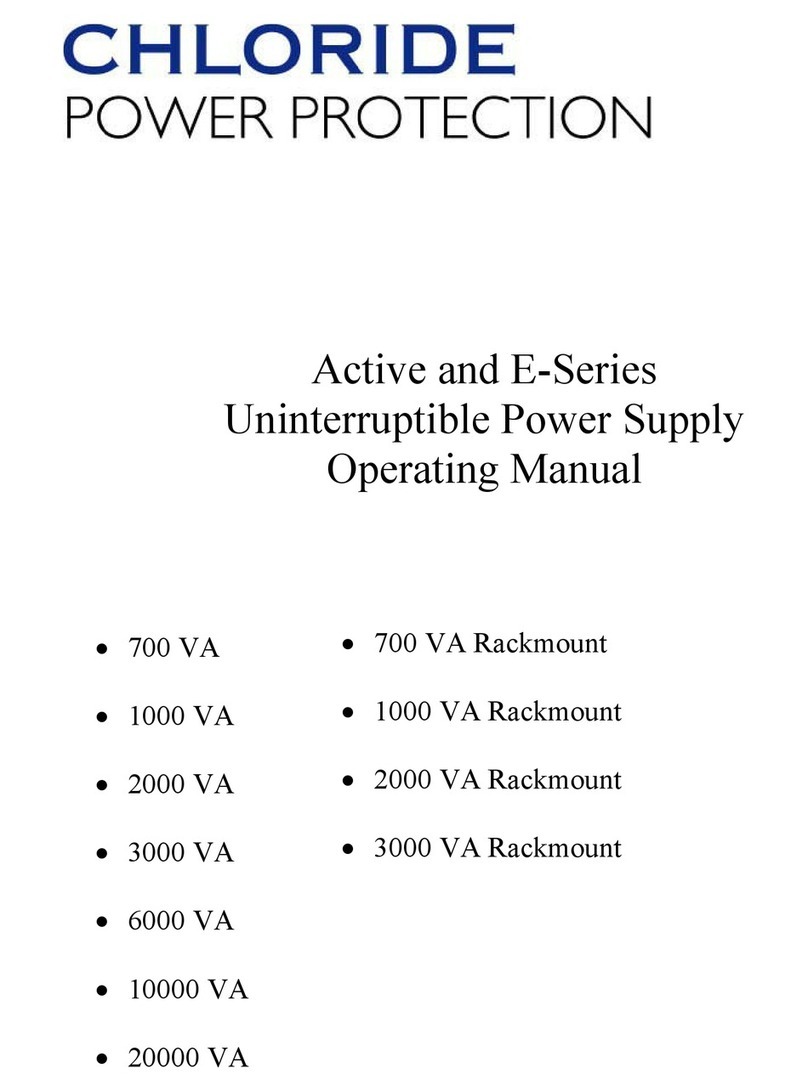
Chloride
Chloride VA 1000 User instruction manual

Maruson
Maruson Ultima RT 6K user manual
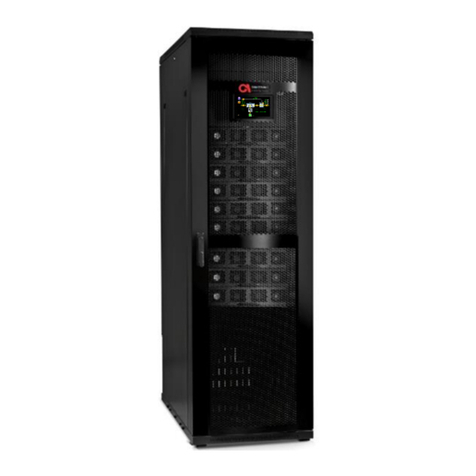
SolarEdge
SolarEdge Gamatronic B240US user guide

SEA
SEA STAR 400 manual
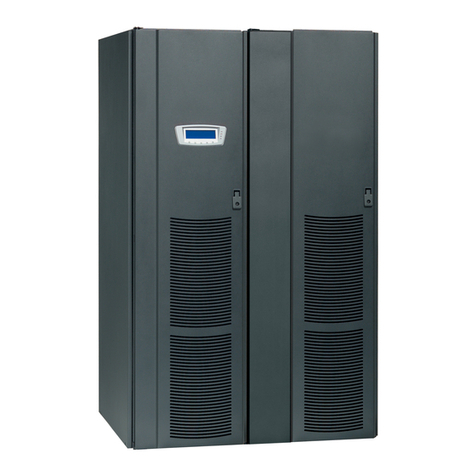
Eaton
Eaton Powerware 9390 Installation and operation manual
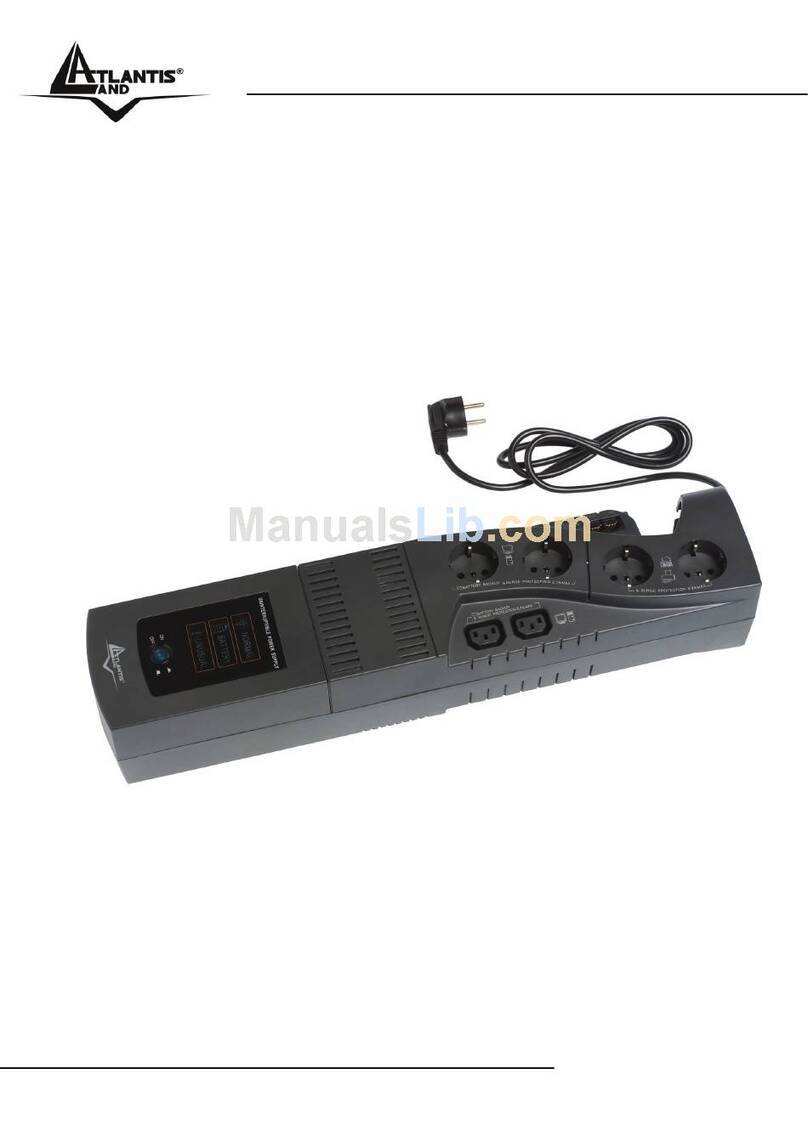
Atlantis Land
Atlantis Land Line Interactive UPS A03-PS651 _MX01 manual

Eaton
Eaton Ellipse ECO 500 Installation and user manual
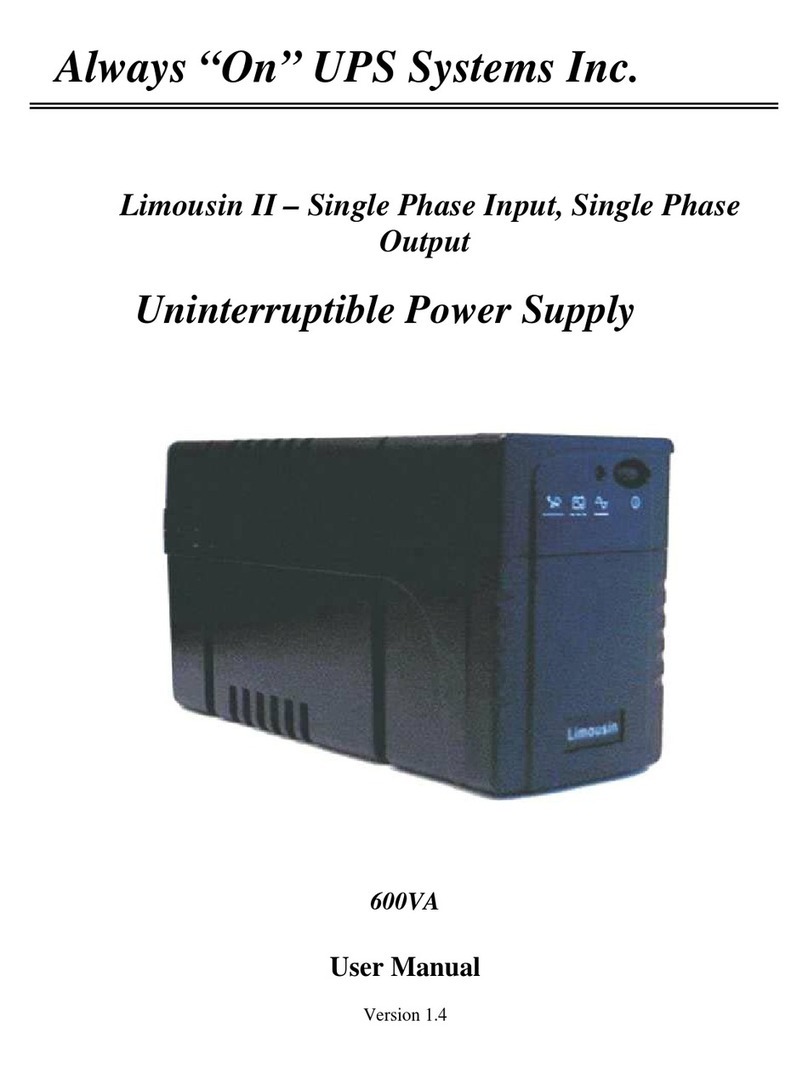
Always “On” UPS
Always “On” UPS Limousin II user manual

Mustek
Mustek PowerMust 600 LED user manual
